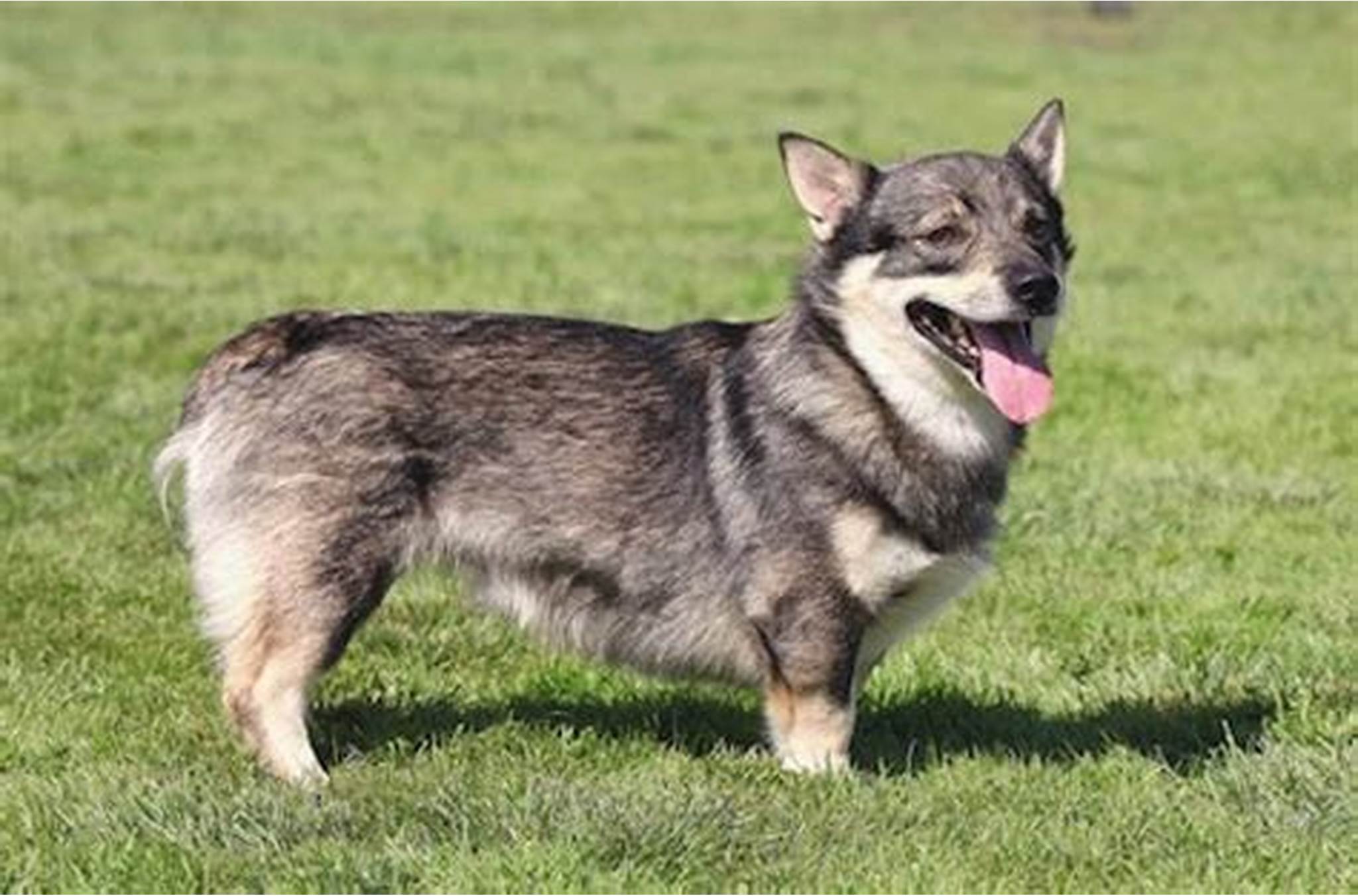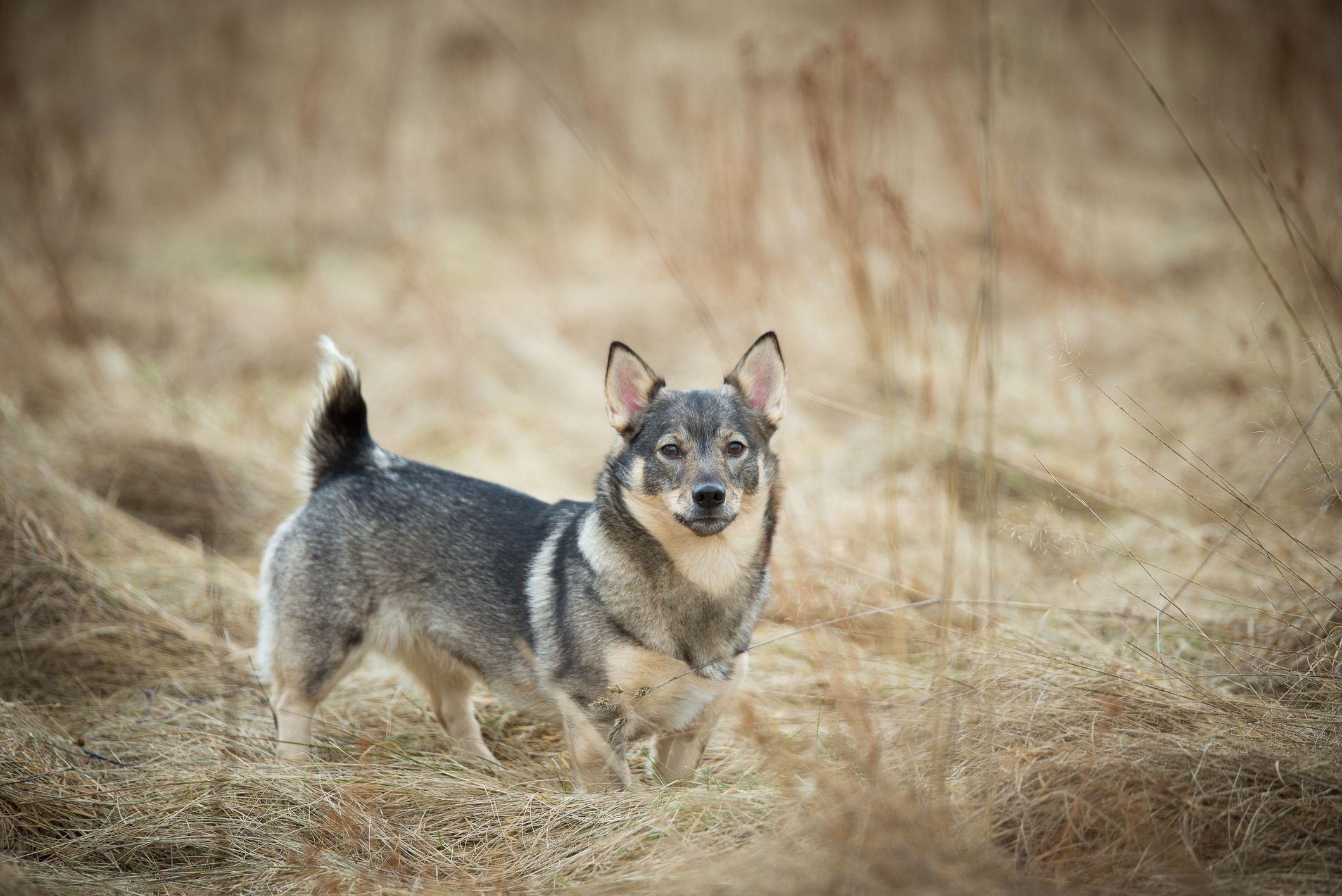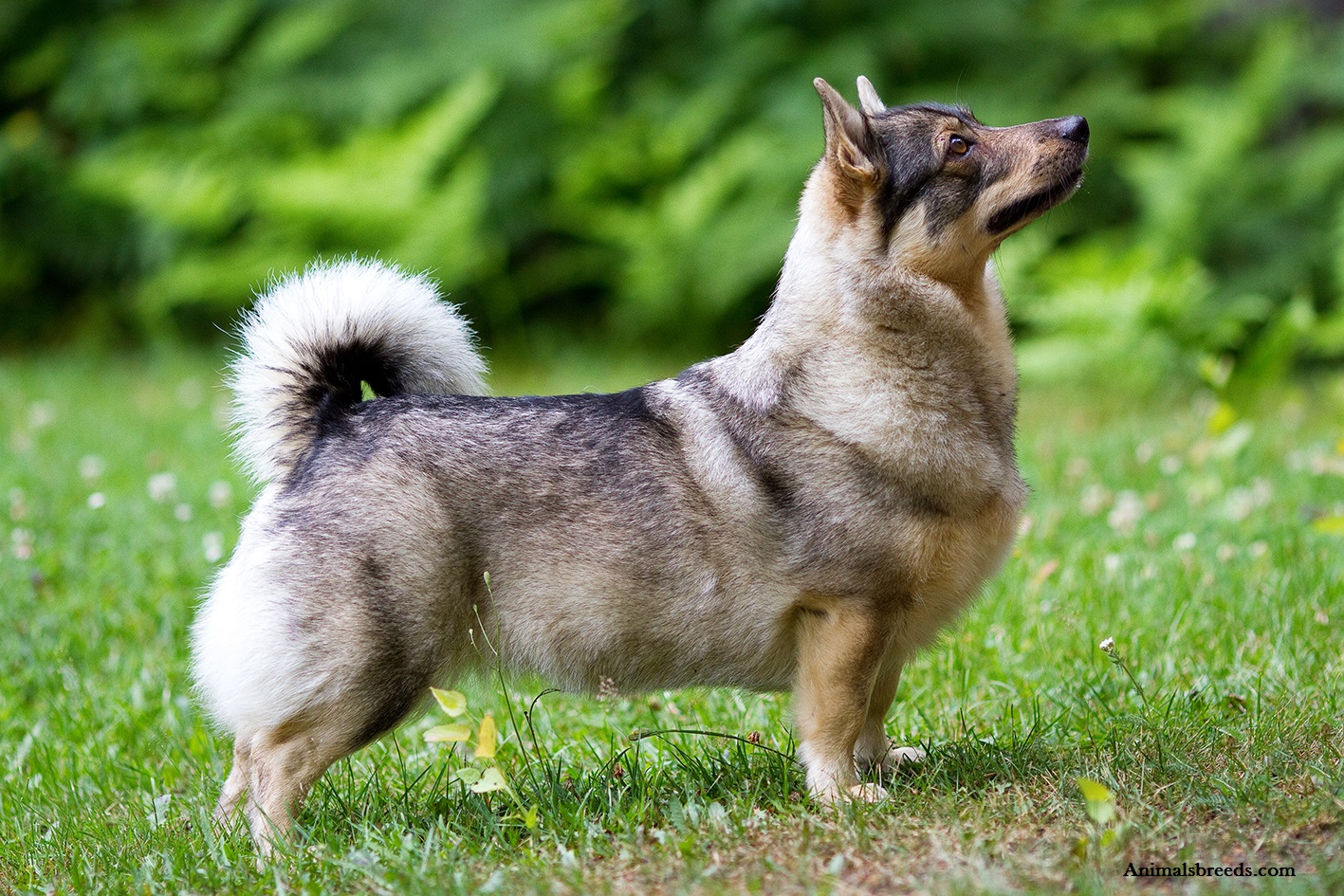
The Swedish Vallhund (Västgötaspets) is an ancient herding breed from Sweden, with roots believed to stretch back over 1,000 years to the time of the Vikings. Thought to have been developed in the province of Västergötland, this small, sturdy spitz-type dog was used to herd cattle, guard property, and hunt vermin.
It is speculated that the Vallhund either influenced or was influenced by the ancestors of the modern Welsh Corgi, due to striking similarities in size and herding behavior. The breed nearly disappeared in the 1940s but was revived by dedicated Swedish breeders. Recognized by the Swedish Kennel Club in 1943 and by international organizations later on, the Vallhund remains a beloved heritage breed and an efficient working dog.
The Swedish Vallhund enjoys modest but steady popularity in Sweden and has grown in recognition in North America, the UK, and other parts of Europe. Breed enthusiasts appreciate its intelligence, versatility, and cheerful nature, as well as its manageable size and distinctive appearance.
As interest in rare and heritage working breeds grows, the Vallhund continues to attract families and active owners worldwide.
The Swedish Vallhund is a small, sturdy, and athletic herding dog with a distinct spitz look and a foxy expression.
• Height: 11.5–13.75 inches (29–35 cm)
• Weight: 20–35 pounds (9–16 kg)
• Build: Low, long-bodied, and strong; built for agility and endurance
• Coat: Medium-length, harsh, and close-fitting double coat with softer undercoat
• Color: Shades of gray, grayish brown, or red-brown with lighter harness markings, mask, and sometimes white markings
• Head: Long and wedge-shaped with defined stop and strong muzzle
• Eyes: Medium, oval, and dark with a lively expression
• Ears: Medium-sized, pointed, and erect
• Tail: Naturally varies — long, stub, or bobtail (all are accepted)
Their alert stance and cheerful expression convey confidence and readiness to work.
Swedish Vallhunds are energetic, intelligent, and social dogs with a playful, hardworking spirit.
• Affectionate: Devoted to family and good with children and other pets
• Energetic: Needs regular exercise and loves to run, play, and herd
• Intelligent: Quick learners and eager to please; excel in obedience and dog sports
• Alert: Natural watchdog, responsive and vocal when necessary
• Versatile: Thrives in activities like herding, agility, obedience, and scent work
They combine an eager-to-please attitude with spunky confidence, making them delightful companions.

The Swedish Vallhund is ideal for:
• Active individuals and families who enjoy outdoor activities and dog sports
• Owners seeking a small, energetic, and highly trainable herding breed
• Homes wanting a confident watchdog and loyal companion
• People who appreciate rare, heritage working breeds with Viking history
However, it may not be ideal for:
• Sedentary households or those unable to provide daily exercise and stimulation
• Owners unprepared for regular coat care and seasonal shedding
• People intolerant of vocal or alert breeds (they can be chatty)
Vallhunds thrive on engagement, activity, and family interaction.
• Exercise: High; needs daily walks, play, and mental enrichment
• Training: Very trainable with positive reinforcement; early socialization is key
• Grooming: Moderate; weekly brushing, heavier grooming during shedding seasons
• Living Environment: Adapts to house or apartment living if exercise needs are met; enjoys a fenced yard
• Feeding: Balanced, high-quality diet appropriate for small-to-medium active breeds
They love structured tasks and games that challenge their intelligence.
The Swedish Vallhund is generally a healthy, robust breed but may be prone to:
• Hip dysplasia
• Progressive Retinal Atrophy (PRA)
• Patellar luxation
With proper care and responsible breeding, they typically live 12 to 15 years.

• Pembroke Welsh Corgi: Similar in size and herding instinct; Vallhunds have a spitz-like face and coat, and are less prone to obesity.
• Norwegian Buhund: Larger and more independent; both are active, intelligent Nordic spitz breeds.
• Shetland Sheepdog: More refined and longer-coated; Shelties are less bold and more sensitive than Vallhunds.
If you’re seeking a compact, energetic, and clever companion with strong herding instincts and a cheerful personality, the Swedish Vallhund is a fantastic choice. They excel with owners who enjoy active lifestyles, structured training, and daily engagement.
Prospective owners should be ready for regular exercise, early training, and plenty of interaction.
Given its rarity, finding a Swedish Vallhund may involve working with breed clubs, international breeders, or rescue organizations. Health testing for hips, eyes, and joints is recommended.
United Pet Club supports Swedish Vallhund owners with microchip registration, health tracking, and activity resources for spitz-type working breeds.